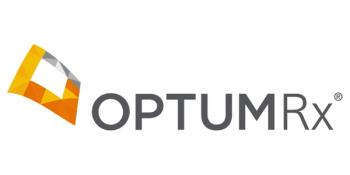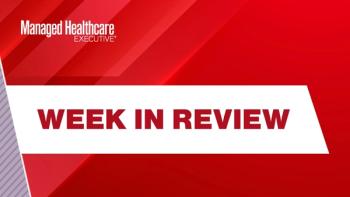
- Vol 28 No 9
- Volume 28
- Issue 9
New Drug Pricing Tools Could Save Money
In response to the lack of transparency, health organizations are creating drug pricing tools that deliver patient-specific pricing. Here’s how they work.
Drugs are often considered a commodity but unlike other products, most people don’t know what they really cost. “We live in an era where you know the exact price of a car before you buy it and of a cab ride before you take it, but healthcare remains one of the few areas where there is still a need to lift the veil on drug pricing to patients,” says Richard Cohan, president, Patient Innovations Division, DrFirst, a Rockville, Maryland-based provider of medication management solutions.
In response to the lack of transparency, health organizations are creating tools that deliver patient-specific drug price information, helping physicians and pharmacists make more cost-effective decisions at the time of prescribing.
Solutions for physicians
In April, San Francisco-based Blue Shield of California and Gemini Health, a health IT firm in Sausalito, California, collaborated to launch the Drug–Cost Transparency Service. Matt Nye, PharmD, vice president of pharmacy services for Blue Shield, calls it a “real-time benefits tool.”
Operating through a provider’s EHR, the service displays information including:
- Patient out-of-pocket costs for selected medications based on a patient’s health plan benefits and formulary
- Accurate total drug cost savings (based on actual payer costs and rebates) for up to three lower cost, dose-matched, clinically equivalent alternative medications
- Total drug costs to the plan
- Accurate patient cost and total savings for alternative pharmacies (e.g., specialty or mail order)
- Whether prior authorization is required, and/or alternative medications that don’t require it
- Any coverage notices that would create pharmacy callbacks to the prescriber’s office
“If we can provide patient-specific, accurate information at the point of prescribing-at the point of decision making-doctors will prescribe what is covered and is most effective,” Nye says. “An EHR needs to include decision support.”
He says the tool could lower out-of-pocket costs, reduce the need for medical office staff to check on prior authorization, and improve adherence.
As a physician, Edward J. Fotsch, MD, founder and CEO of Gemini Health, agrees that doctors don’t know the cost of drugs for patients when they prescribe them, though they would like to help patients lower their drug costs. “Doctors also would like to receive fewer callbacks from a pharmacy when they prescribe a drug requiring prior authorization or one that is too expensive,” he says.
The tool is available to Blue Shield of California’s network of physician groups at no cost, but members of other health plans using the same physician network can access the service through Gemini. Although no physicians ae using the service at press time, as they are still working on EHR integration, Nye estimates that 30% to 40% will have access by the end of 2019.
Solutions for pharmacists
To keep drug costs in tow-especially for patients with high-deductibles-CVS Health developed two new tools: the Pharmacy Rx Savings Finder and a real-time benefits program.
Recently launched in April, the real-time benefits program, s similar to Blue Shield’s product, provides real-time, member-specific drug costs and up to five lower cost alternatives based on a patient’s formulary. Prescribers receive the information through their EHRs. If prior authorization or step therapy is required, prescribers can immediately submit an electronic prior authorization request and in most cases, receive a near real-time decision. Members can access information through the member portal.
The other tool, the Pharmacy Rx Savings Finder, lets the company’s retail pharmacists evaluate individual prescription savings opportunities at the point of sale. Designed initially for CVS Caremark PBM members, the tool indicates:
- If a prescribed medication is on a patient's formulary and if it is the lowest cost option available
- If there are lower-cost options covered under a patient's pharmacy benefit, such as a generic medication or therapeutic alternative with equivalent efficacy of treatment
- If a patient might be able to save money by filling a 90-day prescription rather than a 30-day one
- Other potential savings options for eligible or uninsured patients if no generic or a lower-cost alternative is available
“These tools help improve the patient experience and lower costs,” says Casey Leonetti, senior vice president of PBM innovation, CVS Health, “Specifically, they help avoid rejects at the pharmacy that can lead to primary non-adherence of required therapies; they save patients out-of-pocket costs by helping them maximize their drug benefit to find the lowest cost option; and they reduce administrative burden and costs for providers and plans.”
Early results, according to CVS, show that prescribers accessing the information switched a patient's drug from a noncovered drug to a drug on formulary 85% of the time, and when a patient's drug was covered, prescribers switched the patient to a lower cost alternative 30% to 40% of the time, saving an average of $75 to $100 per prescription.
Mari Edlin, a frequent contributor to Managed Healthcare Executive, is based in Sonoma, California.
Articles in this issue
about 7 years ago
How Tweaking Therapies Can Help Mental Health Treatmentabout 7 years ago
Six Skills You Need to Haveabout 7 years ago
Nine Ways to Reduce Hospital Readmissions from Hospital Executivesabout 7 years ago
Three Ways Health Organizations Can Improve Data Useabout 7 years ago
Five Healthcare Leadership Needs Fueled by Value-Based Careabout 7 years ago
This Drug Spending Trend May Surprise Youabout 7 years ago
Mental Healthcare Program Meets Unique Needs of Militaryover 7 years ago
New Drug Pricing Act Could Change Drug Pricingover 7 years ago
Hospital CEO Keeps Pediatric Care LocalNewsletter
Get the latest industry news, event updates, and more from Managed healthcare Executive.




















































